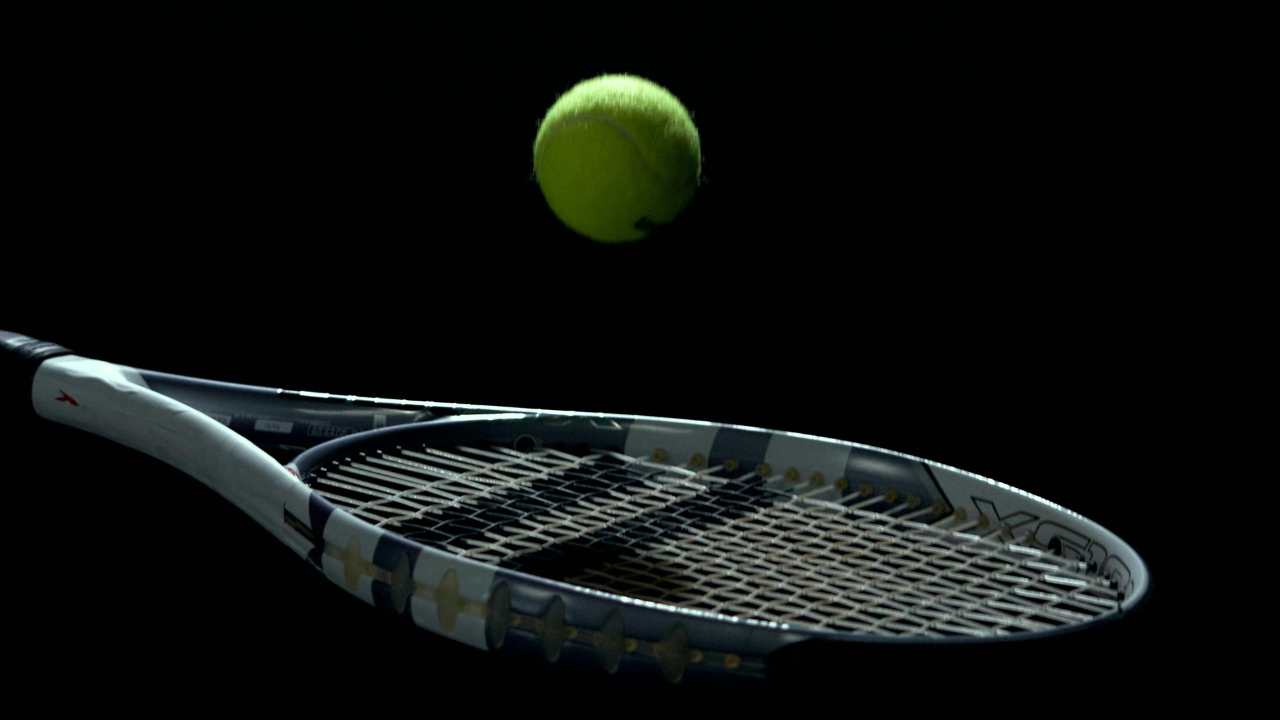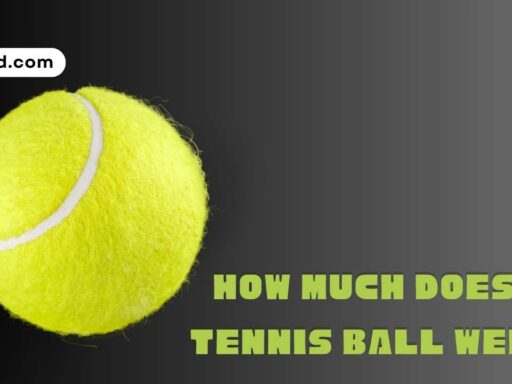Explore the question of how big are tennis balls. Find detailed information on the dimensions and weight of tennis balls, perfect for tennis.
As a tennis player, it is very important to understand different aspects of the game including the equipment used. One essential element in tennis is the tennis ball that plays an important role in the entire gameplay. Did you ever think about how big a tennis ball is? In this article, I will look into the size aspect of tennis balls and discuss how they came about and what impact their size has on game performance.
Size Standards for Tennis Balls
Tennis balls have a standardized size according to official bodies such as the International Tennis Federation (ITF). These regulations stipulate that the diameter of a ball must be between 2.57 and 2.70 inches (6.54 cm to 6.86 cm). This standard ensures consistency in regard to fairness when all players are using balls within this range.

Credit: www.pexels.com
The historical background of tennis balls
Dimensions for tennis balls were not always constant throughout history. Back then, players used different materials, such as leather filled with hair or wool and even cork, to make the balls. There was no standardization, and thus, these balls had varying sizes from one another during those initial years of lawn tennis games, which were far from professionalized tournaments up to the mid-1900s.
Why Do Tennis Balls Have The Size They Have?
The standard size of tennis balls has been arrived at through various considerations. First, it makes handling and controlling during play easier for players due to its manageable dimensions . A bigger sized one will be hard hitting accurately while smaller ones would be hard for most people with poor eyesight like me track their movement properly therefore good example current size can accommodate both aspects hence performance by many players can be enhanced whenever they participate in any form competition.
Also impacting their bounce, there are different sizes because some bounce more than others: a larger one may bounce higher, affecting gameplay accordingly, creating inconsistencies, and subjecting many participants to unfair surprises. ITF’s ranges serve to ensure all competitors get similar jumps to facilitate the equality certainty game.
Different Types of Tennis Balls and Their Dimensions
Though the standard size for tennis balls applies to most professional and recreational tennis matches, there are differences in the types used. Different courts such as clay, grass and hard require different characteristics from balls. For instance clay courts have heavier balls with high bounce while grass courts use lighter ones.
The dimensions of these specialized balls can vary slightly depending on the kind of court conditions they are designed for but still fall within the general range prescribed by ITF.
How to Accurately Measure Tennis Balls
You will be able to know the actual size for your tennis balls if you measure them correctly. Just take a ruler or tape measure and place it along the diameter of a ball making sure it is at its widest point. The measurement should be read as inches or centimeters depending on which one you want as your unit of measurement when determining sizes for your tennis balls.
Compliance with standard dimensions can be ensured by periodically measuring your balls. This is especially necessary in cases where competitive players must follow certain rules.
The size of tennis balls can have a significant impact on game performance; even the minutest variation in size can affect the accuracy of hits, which may lead to inconsistencies in the gaming experience. Moreover, size determines how the ball bounces, and this also influences the strategies and techniques used by players.
It is important for players to adapt to the regulation size of tennis balls and always train with them. This will enable them to acquire a better feeling for what happens when it interacts with their rackets while playing.
Tennis Ball Regulations
The International Tennis Federation (ITF) sets the rules for using tennis balls globally. Among others, these regulations specify the measurement at which a legal ball must be, its weight, bounce and other characteristics that its material must exhibit.
This ensures that tennis is played fairly and uniformly across various tournaments besides different levels of play; hence, according to these rules, all participants get equal opportunities without any advantage or disadvantage that could come as a result of different properties inherent in each particular ball.
Materials Used in Manufacturing Tennis Balls
Tennis balls are not just made from rubbery material. They are made from carefully selected ingredients that affect their behavior in court. Furthermore, The outer shell is constructed with tough felt fabric manufactured typically from a blend of wool plus nylon that provides the grip and texture necessary for good striking[.] On the other hand, an inner core made from a pressurized rubber compound determines how responsive or bouncy it could be during a play.
Manufacturing Process
Several steps are involved in making tennis balls. The first one is creating a rubber core with consistent bouncing properties followed by cutting felt fabric, which tightly wraps around this core, holding it firm. Lastly, the ball’s stitches are sewn together, sealing off any seams to make sure there are no weak points affecting its performance while being played on the court. Finally, they are subjected to pressure tests to ensure they meet the required specifications.
Differences between Tennis Balls and Other Sport Balls
Although they may look like other balls used in different sports, tennis balls have unique features that differentiate them from others. One of the major differences is size. Therefore, a standard tennis ball has a diameter of 2.7 inches (6.86 cm). This is done to ensure that all tennis courts are equal around the world when it comes to competitions. The regularity in size enables players to predict and respond accurately toward any direction followed by the ball.
Another significant difference is in the weight of balls used for tennis games. A standard tennis ball weighs 2 ounces (57 grams). It has been standardized to balance game tactics with longevity. This helps the players generate more power per shot without getting exhausted during lengthy tournament games. Such specific mass also makes each serve, groundstroke, or volley predictable, allowing for accuracy.
The Science Behind Tennis Ball Dimensions
The dimensions of tennis balls have been influenced by technological advancements. One such invention is utilizing gas-filled cores. The traditional tennis ball contained air, which caused its bounce to be inconsistent and, as a result, negatively affected its overall performance. However, modernly these balls contain nitrogen-filled rubber cores with a pressurized environment. This has increased uniformity and durability in the balls improving the playing experience quality.
Moreover, the felt fabric used on tennis balls has changed over time. With the introduction of artificial fibers such as nylon, these balls began to last longer and perform better. These synthetic strands offer more durability against attrition and hence enable the balls to maintain their quality for a longer duration while still retaining shape and feel. Additionally, present-day production techniques guarantee that it is uniformly affixed with no unevenness affecting the ball’s direction.
Other Factors to Consider in Tennis Ball Dimensions
While size and weight are important factors in determining the overall dimensions of tennis balls, there are other determinants that also come into play. One such factor is the internal pressure within it. The typical regulation tennis ball has an internal pressure of about 12-16 psi (pounds per square inch). This affects how high it bounces off surfaces and how fast it reacts once hit by players. On the one hand, higher pressure leads to a more energetic bounce, whereas lesser pressure makes them softy react sluggishly or not at all when hit by a racket deliberately set this way for purposeful advantage taken on court surfaces for differing types of playability.
Additionally, altitude can affect ball dimensions when playing Tennis. At higher altitudes, where air density decreases considerably, this influences flight characteristics of a ball greatly – making them much faster in travel speed and bouncing higher due to reduced drag forces experienced as they go through this medium change with respect above ground level Players have to take this into account so as not to introduce any discrepancy between different venues across various regions.
Common misconceptions about tennis ball dimensions
Several misinterpretations are attached to the topic of tennis ball sizes that require clarification. An example is the thinking that all tennis balls have to be exactly the same size. However, while ITF defines the range within which a ball must fall, minor differences within it can be allowed.
Another myth is that ball size in Tennis can be adjusted on purpose for better advantage during play. Such actions are not tolerated and are considered unethical behavior. Every now and then, ITF carries out checks and tests so as to make sure that tennis balls used by tournament officials meet their stipulated requirements.
Frequently Asked Questions
How Big are Tennis Balls?
Tennis balls measure between 2.575 and 2.7 inches (6.54 and 6.86 cm) in diameter with a circumference ranging from 8.125 to 8.375 inches (20.64 to 21.27 cm). The governing body of world tennis—the International Tennis Federation (ITF) sets out these measurements so as to maintain uniformity throughout the sport.
What are Tennis Balls Made of?
Generally, they comprise an empty rubber core enclosed by either wool or nylon fabric shell casing made from wool or nylon materials; this core is responsible for its bounce while its exterior protects against regular wear.
Why are Tennis Balls Pressurized?
The reason behind pressuring them is for them to give rise to their rebound effect. After landing on a surface hard enough, they lose momentum, thus creating the required bounce on striking any court surface; such a process entails injecting air into a hollow rubber core of the object.
How Long Do Tennis Balls Last?
Consequently, the lifespan of tennis balls can differ depending on how often they are used and the type of field on which they are employed. As a whole, regular match-play tennis balls can last for between 60 minutes and 180 minutes before they begin to lose their bounce and feel.
Conclusion
Although it may appear insignificant in the game. However, the size of tennis balls is crucial for the game’s playability and equity. By abiding by the International Tennis Federation’s stipulation of a standard measurement, players will be assured consistency as well as a level playing ground. By comprehending how large or small tennis balls are, players can opt for sake equipment decisions and thus improve their performance while playing on courts.
So next time you get hold of a ball to play tennis with, just think about its correct size parameters and realize that this sport has been built around every detail.
CTA: Improve your skills through training using appropriate equipment! For instance, ensure that your tennis balls fall within acceptable measures and enjoy an open contest.






